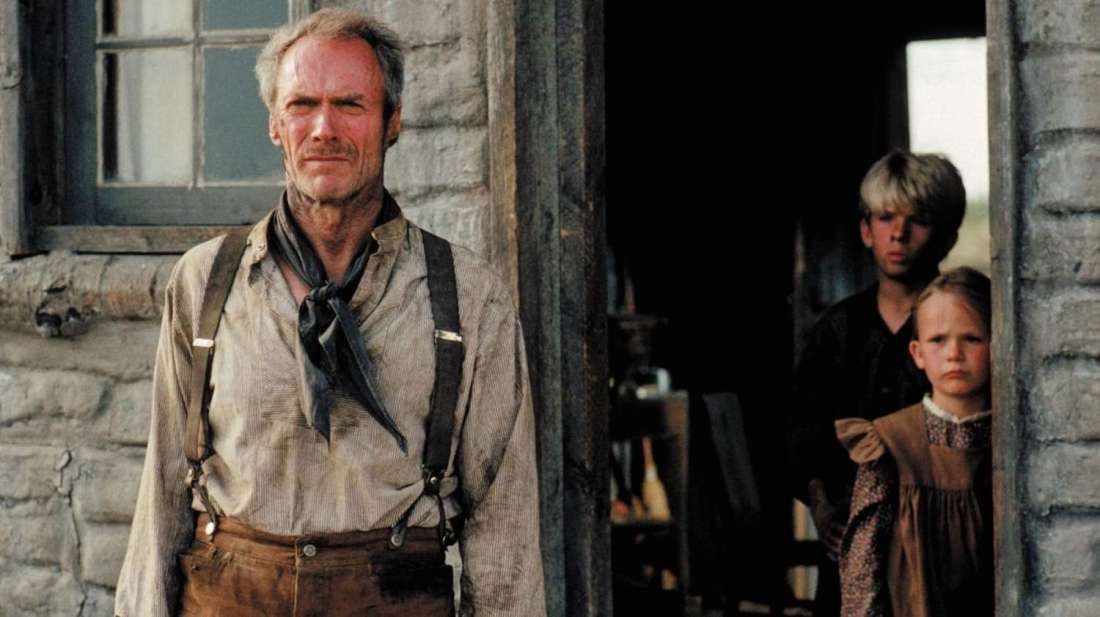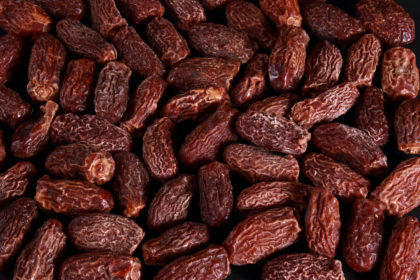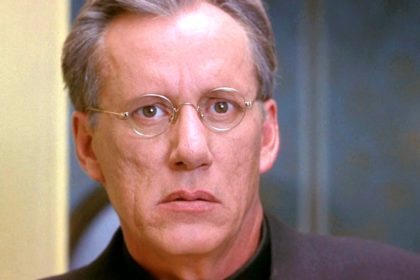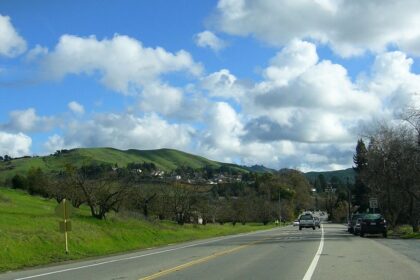Unforgiven is a 1992 American revisionist Western movie produced and directed by Clint Eastwood and written by David Webb Peoples. The movie portrays William Munny, an aging outlaw and killer who takes on one more job years after he had turned to farming. The movie stars Eastwood in the lead role, with Gene Hackman, Morgan Freeman and Richard Harris. Take a look below for 27 more interesting and fascinating facts about Unforgiven.
1. Clint Eastwood said that Unforgiven would be his last Western for fear of repeating himself or imitating someone else’s work.
2. Clint Eastwood dedicated the movie to deceased directors and mentors Don Siegel and Sergio Leone.
3. Unforgiven won 4 Academy Awards: Best Picture and Best Director for Clint Eastwood, Best Supporting Actor for Gene Hackman, and Best Film Editing for editor Joel Cox.
4. Clint Eastwood was nominated for the Academy Award for Best Actor for his performance, but he lost to Al Pacino for Scent of a Woman.
5. Unforgiven was the third Western to win the Oscar for Best Picture, following Cimarron, and Dances with Wolves, and followed by No Country for Old Men.
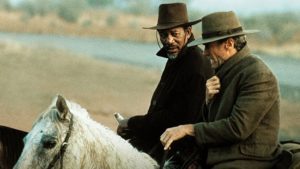
6. In 2004, Unforgiven was added to the United States National Film Registry of the Library of Congress as being deemed, “culturally, historically, or aesthetically significant.”
7. Although the score was arranged by Lennie Niehaus, the main theme was written by Clint Eastwood himself.
8. The movie put to rest Clint Eastwood’s longstanding statement why he would never win an Oscar. Eastwood argued that he would never be in the running because, “First, I’m not Jewish. Secondly, I make too much money. Thirdly, and most importantly, because I don’t give a fuck.”
9. To maintain the authentic atmosphere, no motor vehicles were allowed on the Big Whiskey set.
10. The movie was shot in 39 days, coming in 4 days ahead of schedule. The town had to be built very quickly, with a relatively short run-up time to the start of filming. The construction period was used by the Stunt Coordinator to work on the actors’ riding skills, and stunt choreography.
11. Most of the rain in the movie was specially created because Calgary, where it was shot, was experiencing a dry spell, though the snowfall that is featured when William Munny is recovering from his beating was unexpected.
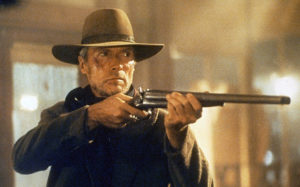
12. Sir Richard Harris was watching High Plains Drifter on television when Clint Eastwood phoned him to offer the part of English Bob.
13. Unforgiven is ranked number 4 on the American Film Institute’s list of the 10 greatest films in the Western genre in June, 2008.
14. It took Clint Eastwood several years to actually get around to reading the script, as his script reader had initially told him that it wasn’t very good.
15. Production Designer Henry Bumstead took only 32 days to have the Big Whiskey set constructed, which is the fastest in his long career.
16. According to Clint Eastwood in a 2000 interview, Gene Hackman was very concerned about how they were going to show the violence in the movie, owing to the rising gun violence in American cities. Eastwood assured Hackman that the movie wouldn’t glorify gun violence.
17. One of the few changes that Clint Eastwood made to David Webb Peoples’s original script, was to remove the opening voiceover and replace it with text.
18. Gene Hackman turned down the part of Munny before the script came to Clint Eastwood.

19. The windmill that appears in the backdrop through much of the movie was a real operating windmill, rather than a set piece, and to this day, pumps water to The Dow Wetlands Preserve in Antioch, California, where it was sent after shooting.
20. Morgan Freeman heard about the movie from Kevin Costner while filming Robin Hood: Prince of Thieves. Morgan approached Clint Eastwood and received the role of Ned Logan.
21. The train sequences were filmed in Sonora, California, as there remained an operational 19th century standard-gauge railway track in the area.
22. Unforgiven and High Plains Drifter open and close with the same location, camera angle, and time of day.
23. None of the participants, least of all Clint Eastwood and writer David Webb Peoples, actively set out to make an anti-violence movie. It was a natural by-product of the script.
24. Clint Eastwood asked Gene Hackman to model his character of Little Bill Dagget on then Los Angeles police chief Daryl Gates.
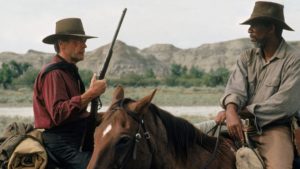
25. “The Duke” was a reference to John Wayne.
26. The character Corky Corcoran is the name of a cameraman that was filming a promotional spot for another Clint Eastwood movie. During a break in the interview, Clint Eastwood asked what the cameraman’s name was, and when told it was Corky Corcoran, Clint didn’t believe him. His given name is John, but he went by Corky his whole life. Clint said that it was a hell of a name.
27. The concept for the movie dated to 1976, when it was developed under the titles “The Cut-Whore Killings” and “The William Munny Killings.”

